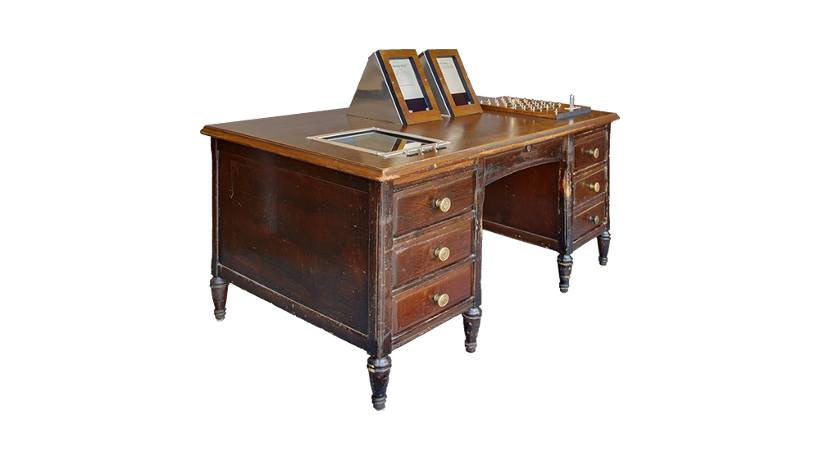The Memex Of Vannevar Bush
We all take it for granted that clicking on an underlined word on a web page will magically transport us to a new site on the internet almost instantly, but the concept of hyperlinking had a legacy well dating decades earlier. In July of 1945, Bush wrote an essay for the well-respected literary magazine The Atlantic Monthly which inspired and resonated with innovators for decades after it was first published. “As We May Think” sounded the opening salvo in a new way of looking at navigating through the large bodies of knowledge people were generating. Bush believed knowledge was coming in at such a great pace that no individual could not absorb, much less remember very much of it. He noted that although this ever-increasing degree of specialization was necessary for progress, but it made any possible connections between disciplines superficial, at best. And he believed that technology could help. Based on his work with analog computers in the 1930s he envisioned a machine, which he named the “Memex”, which could store and instantly retrieve vast amounts of information by a knowledge worker seated at a large desk.
The user of the Memex could instantly browse through an almost unlimited number of articles. The Memex user could then connect an item on one screen to another, creating a permanent “link” between their labels. The ideas of links and trails provided the fundamental inspiration for the kind of hypertext linking used to navigate sites on the internet a half century later.
Apple’s HyperCard
There probably has not been a more enabling piece of software supporting instructional media than Apple's HyperCard. It was the incarnation of Vannevar Bush's Memex and a more practical, albeit less ambitious, embodiment of Ted Nelson's Xanadu hypertext system--with a bit of Douglas Engelbart's innovative sense of inventive engineering thrown in for good measure.
What is most important about HyperCard is that people used it. HyperCard enabled non-technical people to create original solutions that led the world to truly understand the value of the nonlinear, linked world that would come to represent the World Wide Web a decade later.
Apple wunderkind Bill Atkinson developed HyperCard (Initially called “WildCard”) as a side project at Apple after the release of the Macintosh in 1984. He described HyperCard "Simply put, HyperCard is a software erector set that lets non-programmers put together interactive information ... We use cards that contain graphics and text and buttons ... the cards are grouped together in stacks and you can organize it so that any card can jump to any other card. ... The freedom to organize the information according to how things are associated with one another. ... Cards can contain both information and interaction. That's sorta what's new here."[1]
Using HyperCard, you didn't need to be a programmer to create compelling and powerful entertainment and instructional content. It was truly enabling. HyperCard also prepared a whole generation of developers and computer users to become familiar with the ideas of hypertext and linking that formed the foundation of the World Wide Web. Atkinson had some misgivings about not realizing how close HyperCard was to what the Web became. In 2002 he mused "I have realized over time that I missed the mark with HyperCard. I grew up in a box-centric culture at Apple. If I'd grown up in a network-centric culture, like Sun, HyperCard might have been the first Web browser. I thought everyone connected was a pipe dream. Boy, was I wrong. I missed that one."[2]
Vannevar Bush’s 1945 Atlantic essay inspired a number of innovations that operationalized this idea of being able to dynamically link portions of content in a nonlinear fashion that was closer to how he envisioned we really think- associatively, rather than in a fixed path. Bush’s ideas were refined and extended by Ted Nelson’s work with Hypertext and they inspired the networked view of the world we now use daily on the World Wide Web. Douglas Engelbart’s pioneering work on the mouse-driven windowed computer interface made it possible for Bill Atkinson’s HyperCard authoring system to allow non-programmers the ability to craft sophisticated nonlinear learning environments that made individualized learning on the computer significantly easier to deliver.
Footnotes:
- Atkinson, B. (1987). Introduction to HyperCard. Computer Chronicles. [Television broadcast]. Sausalito, CA: Steward Cheifet Productions.
- Kahney, L. (August 14, 2002). HyperCard: What could have been. Wired Magazine.
Excerpted From Sage on the Screen: Education, media, and how we learn by Bill Ferster. Johns Hopkins University Press, 201

